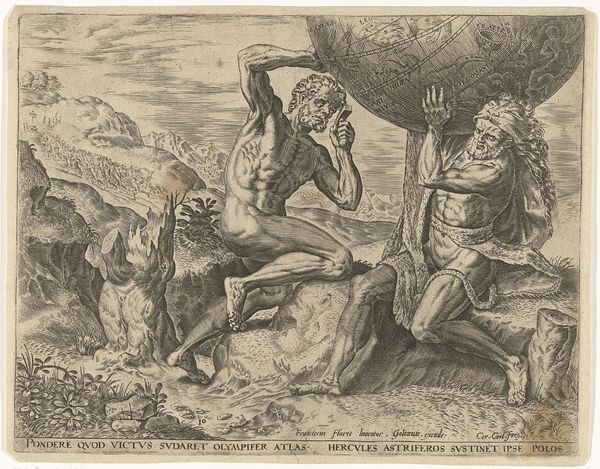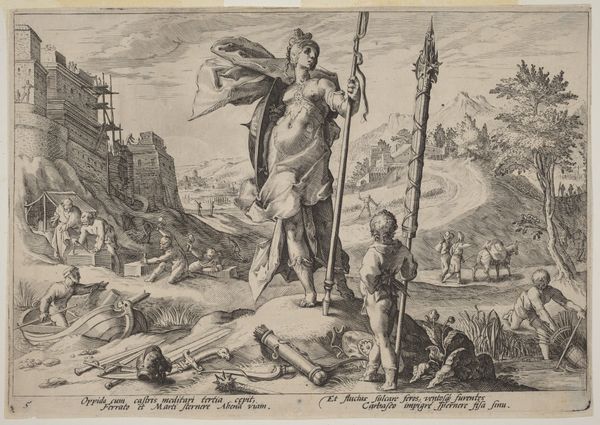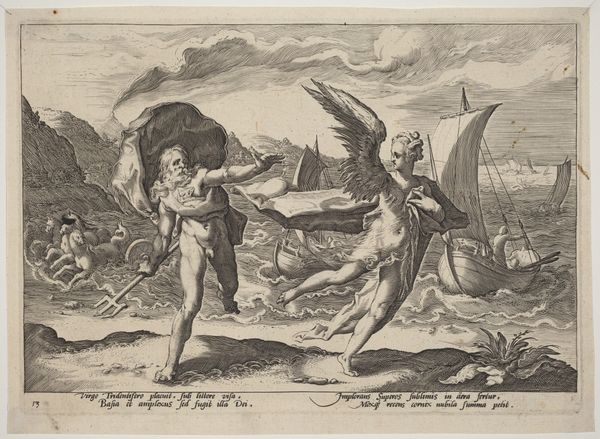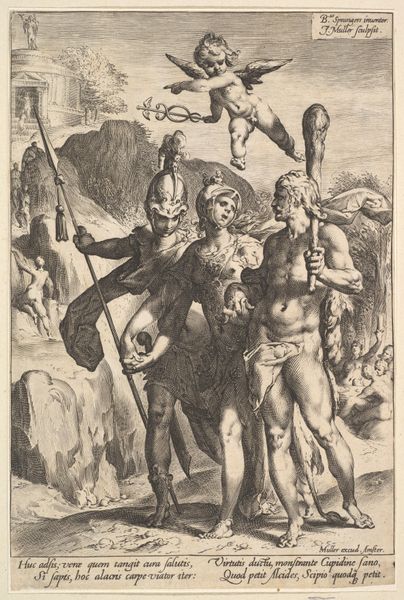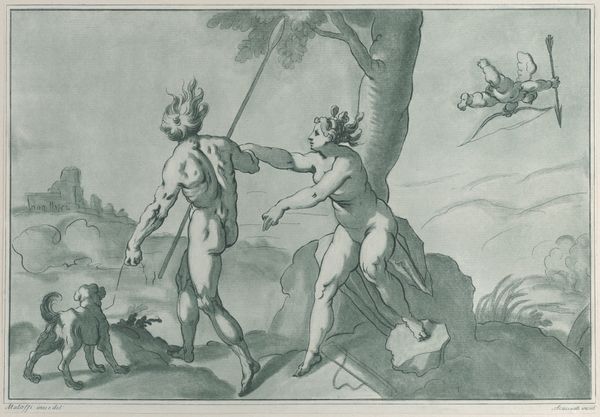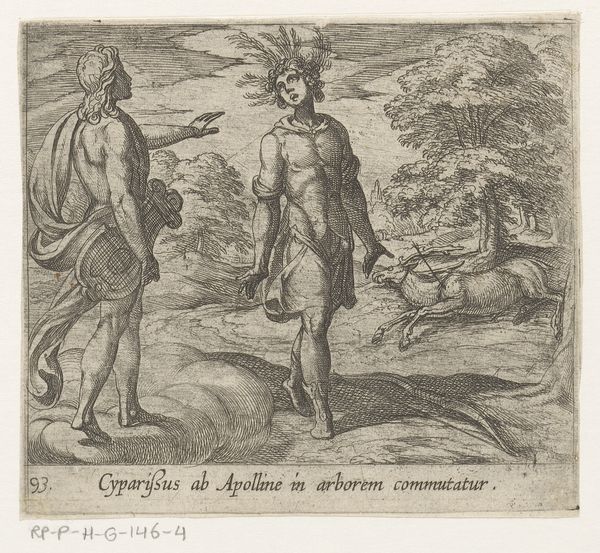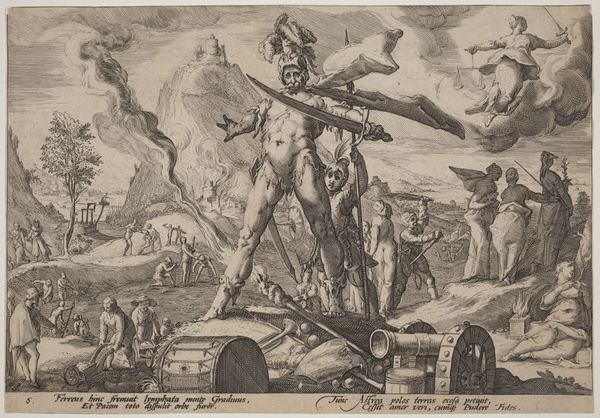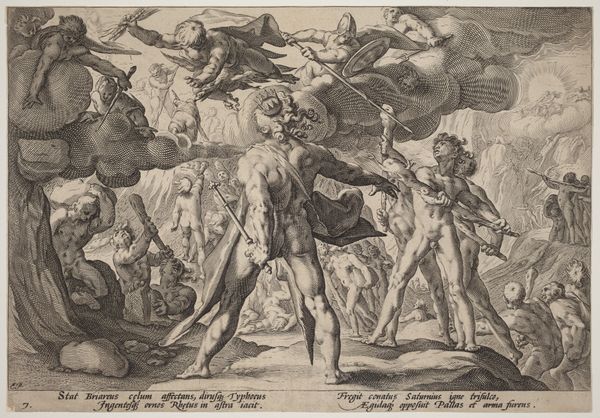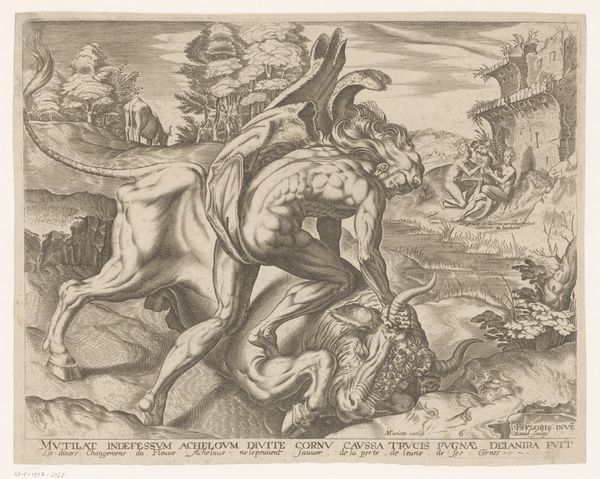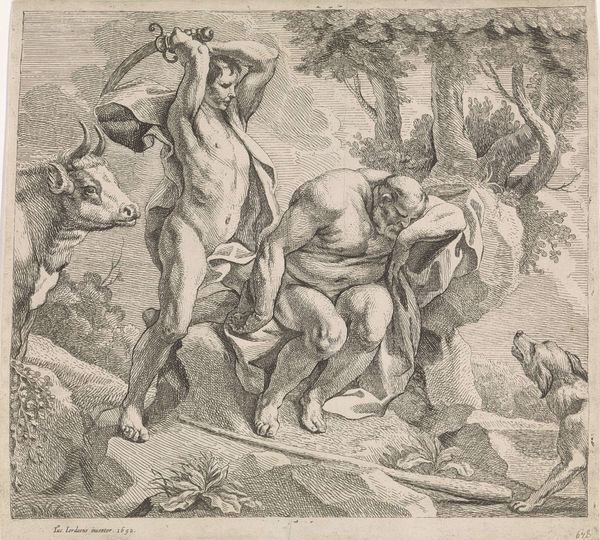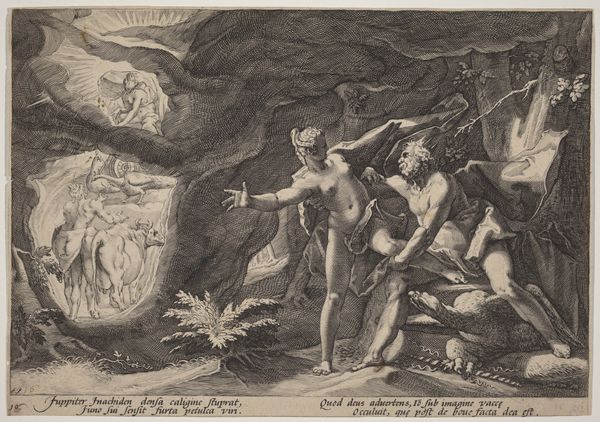
Dimensions: sheet: 18.5 x 26 cm (7 5/16 x 10 1/4 in.), cut to platemark
Copyright: National Gallery of Art: CC0 1.0
Curator: Hendrick Goltzius, a leading Northern Netherlandish engraver, created this piece in 1589. Titled "Daphne Changed into a Laurel Tree," it's a striking example of late Mannerist printmaking, showcasing his virtuosity with the burin. Editor: My immediate reaction? It’s dynamic but also deeply unsettling. Daphne's transformation looks agonizing, not liberating, and Apollo's pursuit seems aggressive rather than amorous. The detail is incredible, but the mood feels…fraught. Curator: Absolutely. Goltzius’s engravings were renowned for their dramatic flair, heavily influenced by classical sources and mythology, but also marked by an anxiety regarding artistic representation. He operated within a complex network of artists and patrons, responding to shifting cultural demands and theological dictates in the wake of the Reformation. This narrative – of pursuit and desperate escape into another form – can be read on multiple levels. Editor: Exactly. The power dynamics are impossible to ignore. It plays into a dangerous history of representing female agency as monstrous, as something that needs to be contained or literally transformed. It almost suggests Daphne *deserves* to become a tree because she resisted Apollo’s advances. I keep wondering, was Goltzius aware of the inherent patriarchal message in the Ovidian tale, or simply replicating it? Curator: It's likely he saw it primarily through a lens of established iconographic traditions, intended for an elite, educated audience. Consider the market for such prints, the learned circles who’d engage with the mythological references, the artistic competition inherent in representing classical themes... Editor: True, but intention doesn't negate impact. What were the implications of circulating such images? Who consumed them? The female body as the site of violence or metamorphosis becomes normalized, artistic license overshadows ethical concern. This makes it vital to contextualize artwork historically but examine through a contemporary lens. Curator: I agree the work sparks very relevant critical dialogues. The composition showcases an awareness of spatial dynamics with Goltzius utilizing the landscape to amplify tension. Also, the crisp lines and tonal contrasts showcase mastery over engraving. It became, therefore, a visual exercise too. Editor: I am left questioning what we truly celebrate within art and, to that end, it invites discussions that address questions regarding history, power, and transformation. Curator: Indeed. Examining its historical significance is enriched with present-day ethical introspection.
Comments
No comments
Be the first to comment and join the conversation on the ultimate creative platform.

